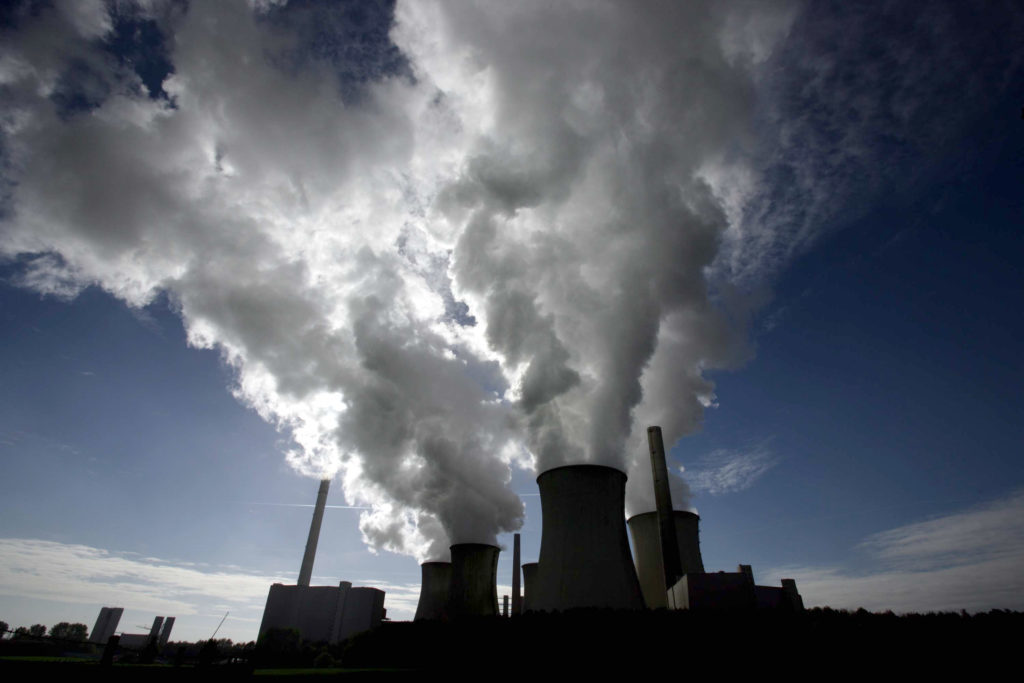
Canada and the U.K. are among six countries preparing the first carbon trades under the landmark Paris Agreement on climate change, part of an effort to unlock as much as $4 billion for the fight against global warming.
The nations are assessing projects to cut greenhouse-gases in exchange for emission credits that can be used to comply with goals they set under the United Nations pact sealed in 2015, according to the World Bank Group, which is overseeing the program.
“We are now in the selection process of programs to be endorsed,” the World Bank said in a response to questions. The other countries contributing money to the bank’s $200 million Transformative Carbon Asset Facility are Germany, Norway, Sweden and Switzerland.
With a target to raise $500 million, the World Bank program would help encourage private companies and development banks to contribute many times more for projects aimed at reducing emissions. The work is a rare sign of new demand in UN carbon markets and would revive a program choked off because the European Union limited its use of imported credits as it repaired its carbon market.
The bank’s program will demonstrate how international collaboration can help spur private investment to meet the target set out in the Paris deal, which is to limit temperature increases to less than 2 degrees Celsius above pre-industrial levels, according to the U.K. government, which is paying 60 million pounds ($76 million) into it.
The fund will help “strengthen the international carbon market, develop innovative ways to cut carbon emissions and encourage private investment,” according to an emailed reply to questions from the British Department for Business, Energy and Industrial Strategy. The U.K. is exiting the EU and has climate targets fixed in law.
The nations are pressing ahead despite pushback from some business and consumer groups resisting higher economic costs from carbon prices. Still, the point of the programs is that only polluting goods and services go up in price.
The World Bank facility will build on the Certified Emission Reductions established by the UN in the 1990s, which have been trading near zero for six years.
Carbon markets are one of the tools economists say can help give companies and nations an incentive for cutting the pollution that causes global warming. The first market to create CERs — the Clean Development Mechanism — spurred spending in emerging nations on wind farms and efficiency measures to rein in greenhouse gases. While EU companies such as German utility RWE AG used credits to comply with the region’s carbon market, the use of CERs was limited by the EU’s rules.
Swedish View
The new fund will work better than the older market because it’ll allow for scaled-up emission cuts in industries rather than through projects, said Kenneth Mollersten, an official in the Swedish Energy Agency, which is participating.
While credibility is key, “there’s no limitation,” so the credits could even come from a country installing new policies to boost energy efficiency, Mollersten said in a phone interview. TCAF will inform climate talks as they progress this year, he said. Programs might include cutting emissions in a country’s power or cement industry, or even lowering methane emissions in rice growing, the official said.
It’s not yet clear what Sweden and the other nations will do with the credits they end up with. “That’s a future political decision,” he said. Options might include using them for compliance with a nation’s Paris pledge, trading them or canceling them.
The average size of each project or transaction under the new system would be $30 million to $50 million, according to the World Bank. That would leverage $2 billion to $4 billion in additional financing for reducing emissions, with institutions such as development banks and private companies contributing.
The facility is meant to create the “carbon assets” under Article 6 of the Paris Agreement, which will apply globally after 2020. It’ll “seek out high quality programs with the intention that they would generate carbon assets which would be compliant” and be used for to meet emission targets, the bank said. The facility will purchase credits over five-to-seven years.
Minimum Contribution
A minimum contribution of $25 million is required for organizations to participate in selecting programs to be used under the system. Canada and Germany may not initially be part of that process because they are listed as giving only a few million dollars each.
The Paris deal recognized that the world “can achieve greater and faster climate action by cooperating” through markets, said Jennifer Gearey, a spokeswoman for Environment and Climate Change Canada.
While Canada is still considering “whether and how” it will use international carbon markets to meet its 2030 Paris emission targets, the TCAF may reveal how they can “catalyze scaled-up public and private investment,” she said by email.
In May, the nations in TCAF endorsed key rules for choosing the first projects and programs under the new UN system. The next step is to select specific projects, the bank said, declining to give details about which of those might win finance.
The payments from the contributors could be used to support developing-country governments to improve industrial planning and strengthen low-carbon policy. That will help pave the way for the investment by the private sector.
“If successful, the facility could provide far better bang for the buck than previous project-based UN markets, because it’ll help countries start to self-govern large-scale emissions reductions,” said Jahn Olsen, an analyst in London with Bloomberg NEF.
Recommended for you
